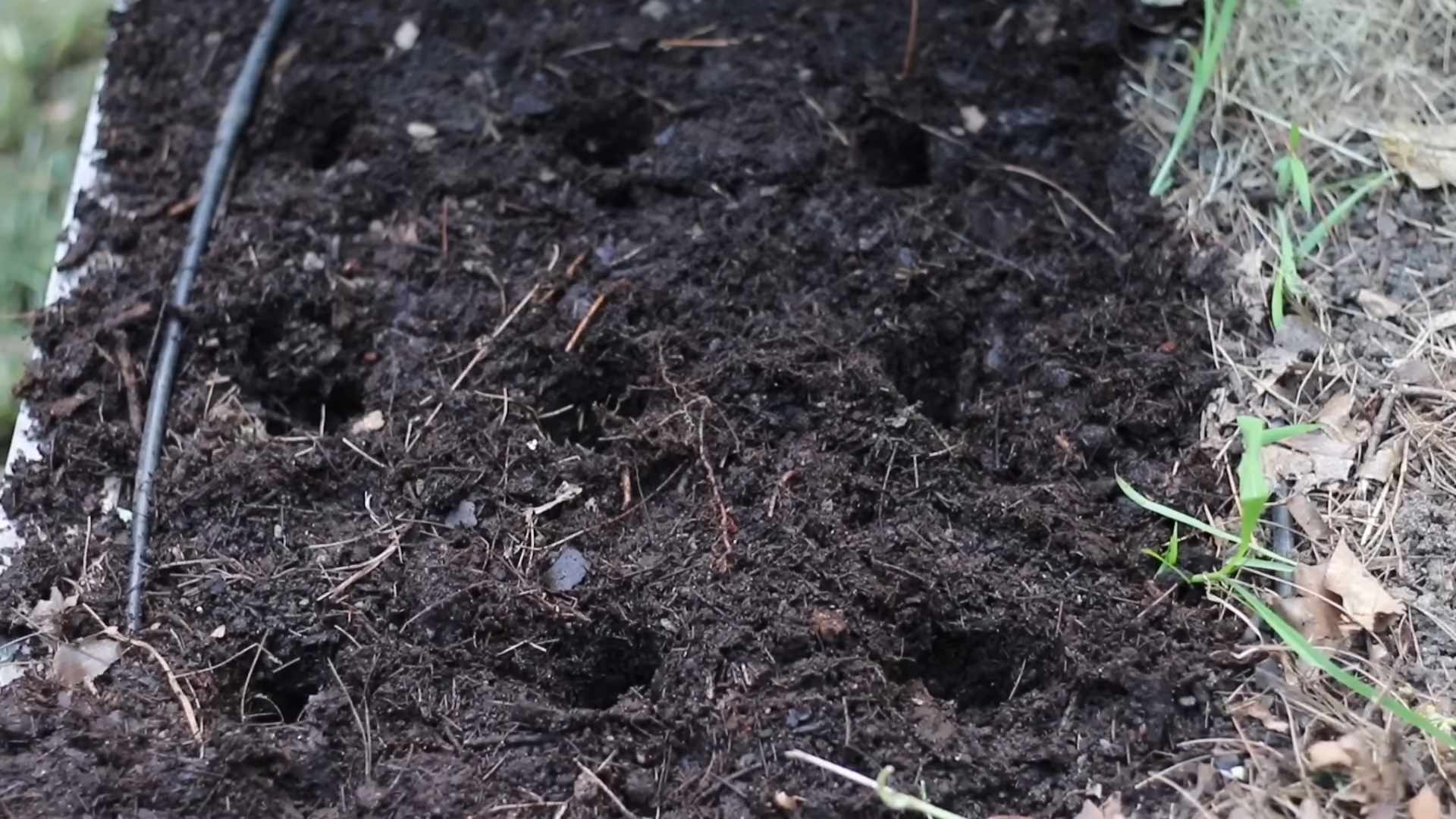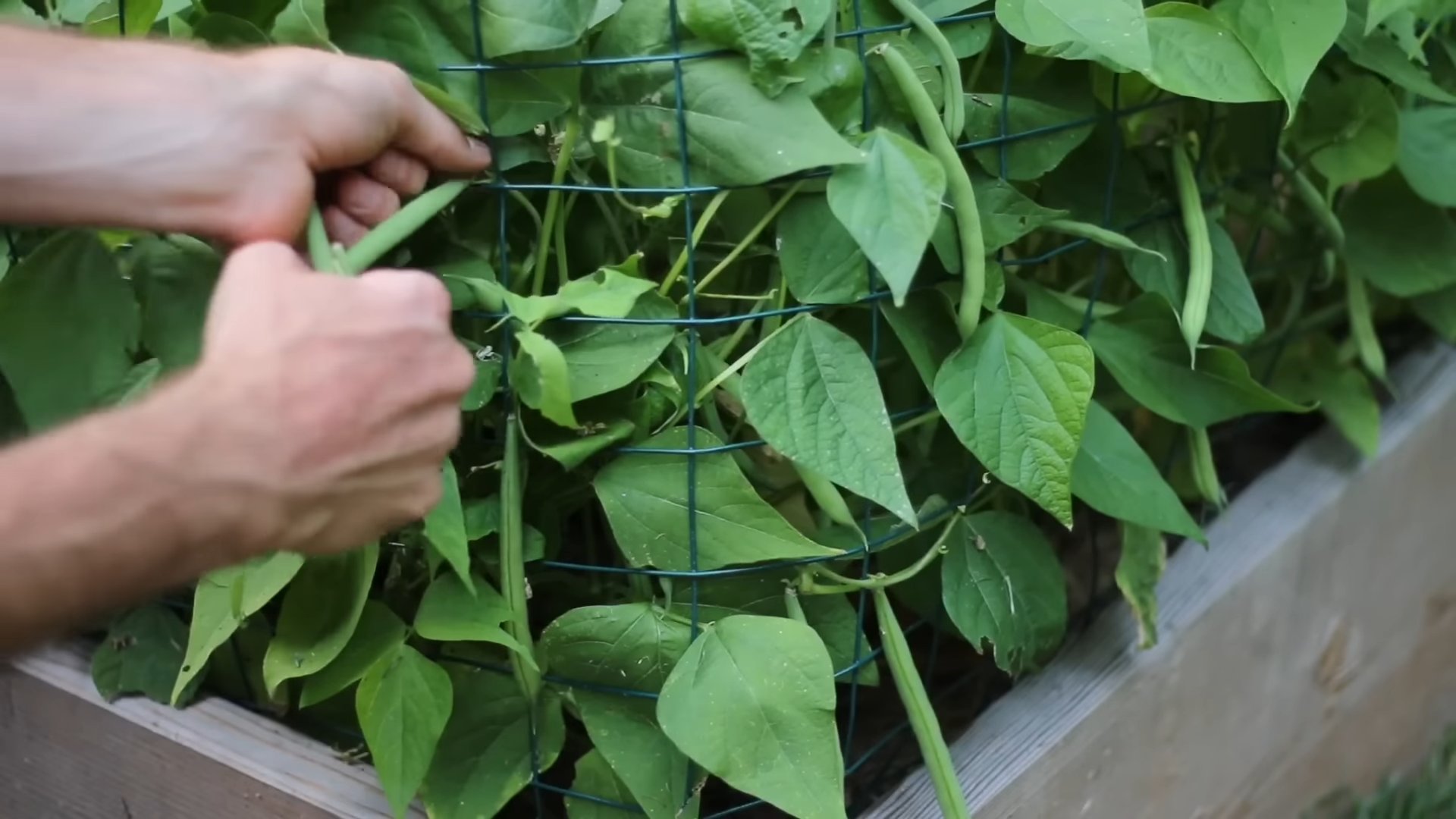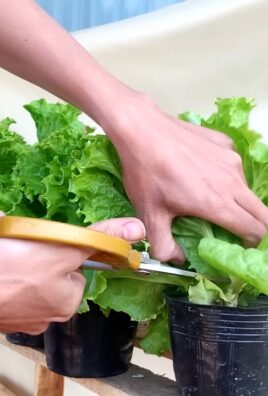Grow Bush Beans at Home – and unlock a world of fresh, flavorful possibilities right in your backyard! Have you ever imagined stepping outside and harvesting your own plump, juicy bush beans for dinner? It’s not just a dream; it’s an achievable reality with a few simple tricks and DIY techniques. For centuries, cultivating beans has been a cornerstone of sustainable agriculture, providing essential nutrients and enriching the soil. From ancient civilizations to modern-day homesteaders, the humble bean has nourished communities worldwide.
But why should you bother learning how to grow bush beans at home? In today’s world, where access to fresh, healthy produce can be a challenge, having your own garden offers unparalleled benefits. Imagine bypassing the grocery store lines and enjoying beans bursting with flavor, knowing exactly where they came from and how they were grown. Plus, gardening is a fantastic stress reliever and a rewarding hobby that connects you with nature. I’m here to guide you through the process, sharing easy-to-follow DIY hacks that will transform your garden into a thriving bean patch. Get ready to roll up your sleeves and discover the joy of homegrown goodness!

Grow Bush Beans at Home: A Beginner’s Guide
Hey there, fellow gardening enthusiasts! I’m so excited to share my experience with growing bush beans at home. It’s a rewarding and relatively easy project, perfect for beginners and seasoned gardeners alike. Bush beans are fantastic because they don’t require trellising like pole beans, making them ideal for smaller gardens or even container gardening. Let’s dive in!
What You’ll Need
Before we get started, let’s gather all the necessary supplies. Trust me, having everything ready beforehand will make the whole process much smoother.
* Bush Bean Seeds: Choose your favorite variety! Some popular options include Blue Lake, Contender, and Provider. I personally love the Blue Lake variety for their flavor and productivity.
* Gardening Gloves: Protect those hands!
* Hand Trowel or Garden Shovel: For digging holes and preparing the soil.
* Watering Can or Hose: Essential for keeping your beans hydrated.
* Well-Draining Soil: Bush beans thrive in soil that drains well. You can use a good quality potting mix if you’re planting in containers.
* Compost or Aged Manure (Optional): To enrich the soil and provide extra nutrients.
* Fertilizer (Optional): A balanced fertilizer can give your beans a boost.
* Garden Markers: To label your rows or containers.
* Measuring Tape or Ruler: To ensure proper spacing.
* Container (Optional): If you’re growing in containers, make sure they’re at least 12 inches deep and wide.
Preparing the Soil
The key to successful bush bean growing is starting with healthy soil. Here’s how I prepare my soil:
1. Choose a Sunny Location: Bush beans need at least 6-8 hours of sunlight per day. Pick a spot in your garden that gets plenty of sunshine.
2. Clear the Area: Remove any weeds, rocks, or debris from the planting area.
3. Loosen the Soil: Use a garden fork or tiller to loosen the soil to a depth of about 12 inches. This will help the roots penetrate easily.
4. Amend the Soil (Optional): If your soil is heavy clay or sandy, amend it with compost or aged manure. This will improve drainage and add nutrients. I usually add a generous layer of compost to my garden bed.
5. Rake the Soil: Rake the soil smooth to create a level planting surface.
Planting the Seeds
Now for the fun part – planting the seeds!
1. Check the Last Frost Date: Bush beans are sensitive to frost, so wait until after the last expected frost in your area to plant. You can find this information online or from your local extension office.
2. Sow the Seeds Directly: Bush beans are best sown directly into the garden. They don’t transplant well.
3. Create Rows or Hills: You can plant bush beans in rows or in small hills. For rows, create shallow furrows about 1 inch deep. For hills, create small mounds of soil about 6 inches in diameter.
4. Space the Seeds: Space the seeds about 2-4 inches apart in rows, or 4-6 seeds per hill.
5. Cover the Seeds: Cover the seeds with about 1 inch of soil.
6. Water Gently: Water the soil gently to moisten it without disturbing the seeds.
7. Label Your Rows or Containers: Use garden markers to label your rows or containers with the variety of bush beans you planted. This will help you keep track of what’s growing where.
Caring for Your Bush Beans
Once your seeds are planted, it’s important to provide them with the care they need to thrive.
1. Water Regularly: Keep the soil consistently moist, but not waterlogged. Water deeply whenever the top inch of soil feels dry. I usually water my beans in the morning to allow the foliage to dry before nightfall, which helps prevent fungal diseases.
2. Weed Regularly: Keep the planting area free of weeds, which can compete with your beans for nutrients and water. Hand-pull weeds carefully to avoid disturbing the bean plants.
3. Fertilize (Optional): If your soil is poor, you can fertilize your bush beans with a balanced fertilizer about 2-3 weeks after they emerge. Follow the instructions on the fertilizer package. I prefer to use a liquid fertilizer diluted in water.
4. Watch for Pests and Diseases: Keep an eye out for common bean pests like aphids, bean beetles, and spider mites. You can control these pests with insecticidal soap or neem oil. Also, watch for diseases like powdery mildew and bean rust. Improve air circulation and avoid overhead watering to prevent these diseases.
5. Mulch (Optional): Applying a layer of mulch around your bean plants can help retain moisture, suppress weeds, and regulate soil temperature. I like to use straw or shredded leaves as mulch.
Harvesting Your Bush Beans
The moment you’ve been waiting for – harvesting your delicious bush beans!
1. Harvest Time: Bush beans are typically ready to harvest about 50-60 days after planting.
2. Check the Pods: Harvest the beans when the pods are firm, plump, and about the size of a pencil. The beans inside should be small and tender.
3. Pick Carefully: Gently snap the pods off the plant, being careful not to damage the stems or leaves.
4. Harvest Regularly: Harvest your bush beans regularly, every few days, to encourage continued production. The more you pick, the more they’ll produce!
5. Enjoy Your Harvest: Enjoy your fresh bush beans in salads, stir-fries, soups, or as a side dish. You can also freeze or can them for later use. I love blanching them quickly and then freezing them for a taste of summer all year round.
Growing Bush Beans in Containers
Don’t have a garden? No problem! You can easily grow bush beans in containers.
1. Choose the Right Container: Select a container that is at least 12 inches deep and wide. Make sure it has drainage holes.
2. Use a Good Quality Potting Mix: Fill the container with a well-draining potting mix.
3. Plant the Seeds: Plant the seeds as described above, spacing them about 2-4 inches apart.
4. Water Regularly: Water the container regularly, keeping the soil consistently moist.
5. Fertilize (Optional): Fertilize the beans with a balanced fertilizer every 2-3 weeks.
6. Provide Support (Optional): Although bush beans don’t typically need support, you can add a small stake or trellis to the container if you want to keep the plants upright.
7. Place in a Sunny Location: Place the container in a sunny location that gets at least 6-8 hours of sunlight per day.
Troubleshooting
Even with the best care, you might encounter some problems while growing bush beans. Here are a few common issues and how to address them:
* Poor Germination: If your seeds don’t germinate, it could be due to cold soil, overwatering, or old seeds. Make sure the soil is warm enough, avoid overwatering, and use fresh seeds.
* Yellowing Leaves: Yellowing leaves can be a sign of nutrient deficiency, overwatering, or disease. Check the soil drainage, fertilize if necessary, and treat any diseases promptly.
* Pest Infestations: As mentioned earlier, keep an eye out for common bean pests and treat them with insecticidal soap or neem oil.
* Disease Problems: Prevent diseases by improving air circulation, avoiding overhead watering, and using disease-resistant varieties.
Tips for a Bountiful Harvest
Here are a few extra tips to help you maximize your bush bean harvest:
* Succession Planting: Plant a new batch of seeds every 2-3 weeks to extend your harvest season.
* Choose the Right Variety: Select varieties that are well-suited to your climate and growing conditions.
* Provide Adequate Sunlight: Bush beans need plenty of sunlight to thrive.
* Water Consistently: Consistent watering is essential for healthy bean growth.
* Harvest Regularly: Harvest your beans regularly to encourage continued production.
Growing bush beans at home is a truly rewarding experience. With a little bit of care and attention, you can enjoy a bountiful harvest of fresh, delicious beans all season long. Happy gardening!

Conclusion
So, there you have it! Growing bush beans at home is not only achievable, but it’s also incredibly rewarding. From the satisfying crunch of a freshly picked bean to the knowledge that you nurtured it from seed to table, the experience is truly special. We’ve walked you through the process, highlighting the ease and simplicity of cultivating these garden gems.
Why is this DIY trick a must-try? Because it puts fresh, organic produce directly within your reach. No more relying on grocery store beans that may have traveled miles and lost their peak flavor. With homegrown bush beans, you control the quality, ensuring they are free from unwanted pesticides and bursting with nutrients. Plus, it’s a fantastic way to connect with nature, de-stress, and even get the kids involved in a fun and educational activity.
But the beauty of gardening lies in its adaptability. Feel free to experiment with different varieties of bush beans. Consider trying ‘Blue Lake’ for its classic flavor and high yields, or ‘Contender’ for its early maturity and resistance to common diseases. If you’re short on space, container gardening is an excellent option. Just make sure your pots are large enough to accommodate the plants’ root systems. You can even companion plant your bush beans with other vegetables like carrots, cucumbers, or marigolds to deter pests and improve soil health.
Don’t be afraid to get your hands dirty and embrace the learning process. Gardening is a journey, and there will be successes and challenges along the way. The key is to be patient, observant, and willing to adapt your approach as needed. Remember to provide your bush beans with plenty of sunlight, well-drained soil, and consistent watering. With a little care and attention, you’ll be harvesting a bountiful crop in no time.
We are confident that you will find growing bush beans at home to be a fulfilling and enjoyable experience. So, grab your seeds, prepare your soil, and get ready to embark on this exciting gardening adventure. We encourage you to try this DIY trick and share your experiences with us! Let us know what varieties you planted, what challenges you faced, and what tips you discovered along the way. Your insights could inspire other aspiring gardeners and help us all learn and grow together. Happy gardening!
Frequently Asked Questions (FAQ)
What are the benefits of growing bush beans at home compared to buying them from the store?
Growing bush beans at home offers several advantages. First and foremost, you have complete control over the growing process, ensuring that your beans are free from harmful pesticides and herbicides. This translates to healthier, more nutritious produce for you and your family. Secondly, homegrown bush beans are often fresher and more flavorful than store-bought beans, which may have traveled long distances and lost some of their quality. Finally, gardening is a rewarding and therapeutic activity that can reduce stress, connect you with nature, and provide a sense of accomplishment.
How much space do I need to grow bush beans?
One of the great things about bush beans is that they don’t require a lot of space. They are compact plants that can be grown in small gardens, raised beds, or even containers. A single bush bean plant typically needs about 6-8 inches of space between plants in a row, and rows should be spaced about 2-3 feet apart. If you’re growing in containers, choose pots that are at least 12 inches in diameter and depth to provide adequate room for the roots to develop.
What kind of soil is best for growing bush beans?
Bush beans thrive in well-drained soil that is rich in organic matter. Before planting, amend your soil with compost or other organic materials to improve its fertility and drainage. The ideal soil pH for bush beans is between 6.0 and 7.0. If your soil is too acidic, you can add lime to raise the pH. If it’s too alkaline, you can add sulfur to lower the pH. A soil test can help you determine the pH of your soil and identify any nutrient deficiencies.
How often should I water my bush beans?
Bush beans need consistent watering, especially during hot, dry weather. Water deeply and regularly, aiming to keep the soil consistently moist but not waterlogged. Avoid overhead watering, as this can promote fungal diseases. Instead, water at the base of the plants, using a soaker hose or drip irrigation system if possible. Check the soil moisture regularly by sticking your finger into the soil. If the top inch feels dry, it’s time to water.
When is the best time to plant bush beans?
Bush beans are warm-season crops that should be planted after the last frost in your area. The soil temperature should be at least 60°F (16°C) for optimal germination. You can start seeds indoors 2-3 weeks before the last frost, but bush beans transplant poorly, so it’s generally best to direct sow them in the garden. In areas with long growing seasons, you can plant multiple crops of bush beans throughout the summer for a continuous harvest.
How long does it take for bush beans to mature?
Bush beans typically mature in 50-60 days from planting. However, the exact time will depend on the variety of bean and the growing conditions. You can start harvesting beans when they are about the size of a pencil and the pods are firm and crisp. Pick the beans regularly to encourage continued production.
What are some common pests and diseases that affect bush beans?
Some common pests that can affect bush beans include aphids, bean beetles, and spider mites. Diseases that can affect bush beans include powdery mildew, bean rust, and anthracnose. To prevent pest and disease problems, choose disease-resistant varieties, practice good sanitation in the garden, and avoid overhead watering. If you do encounter pests or diseases, treat them promptly with appropriate organic or chemical controls.
Can I grow bush beans in containers?
Yes, bush beans are well-suited for container gardening. Choose pots that are at least 12 inches in diameter and depth, and fill them with a well-draining potting mix. Be sure to provide your container-grown bush beans with plenty of sunlight and water. You may also need to fertilize them more frequently than beans grown in the ground, as nutrients can leach out of the soil more quickly in containers.
How do I harvest bush beans?
Harvest bush beans when the pods are firm, crisp, and about the size of a pencil. Gently snap the beans off the plant, being careful not to damage the stems. Harvest regularly to encourage continued production. Overripe beans will become tough and stringy.
How do I store bush beans?
Freshly harvested bush beans can be stored in the refrigerator for up to a week. To store them for longer periods, you can blanch them and freeze them. You can also can or pickle bush beans for long-term storage.





Leave a Comment